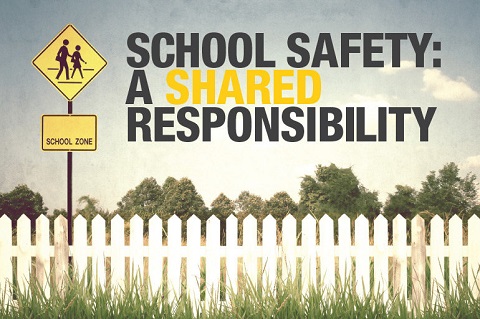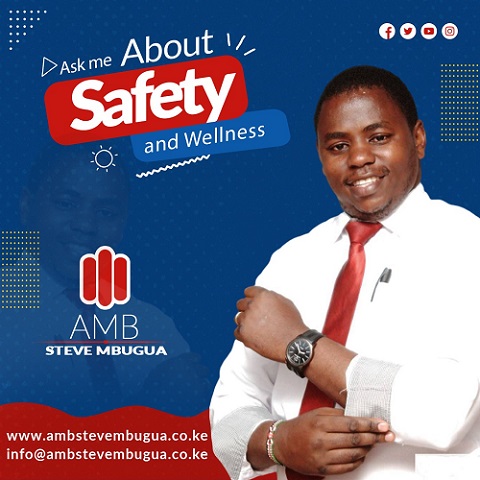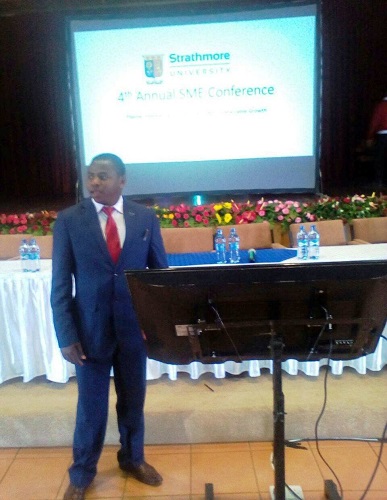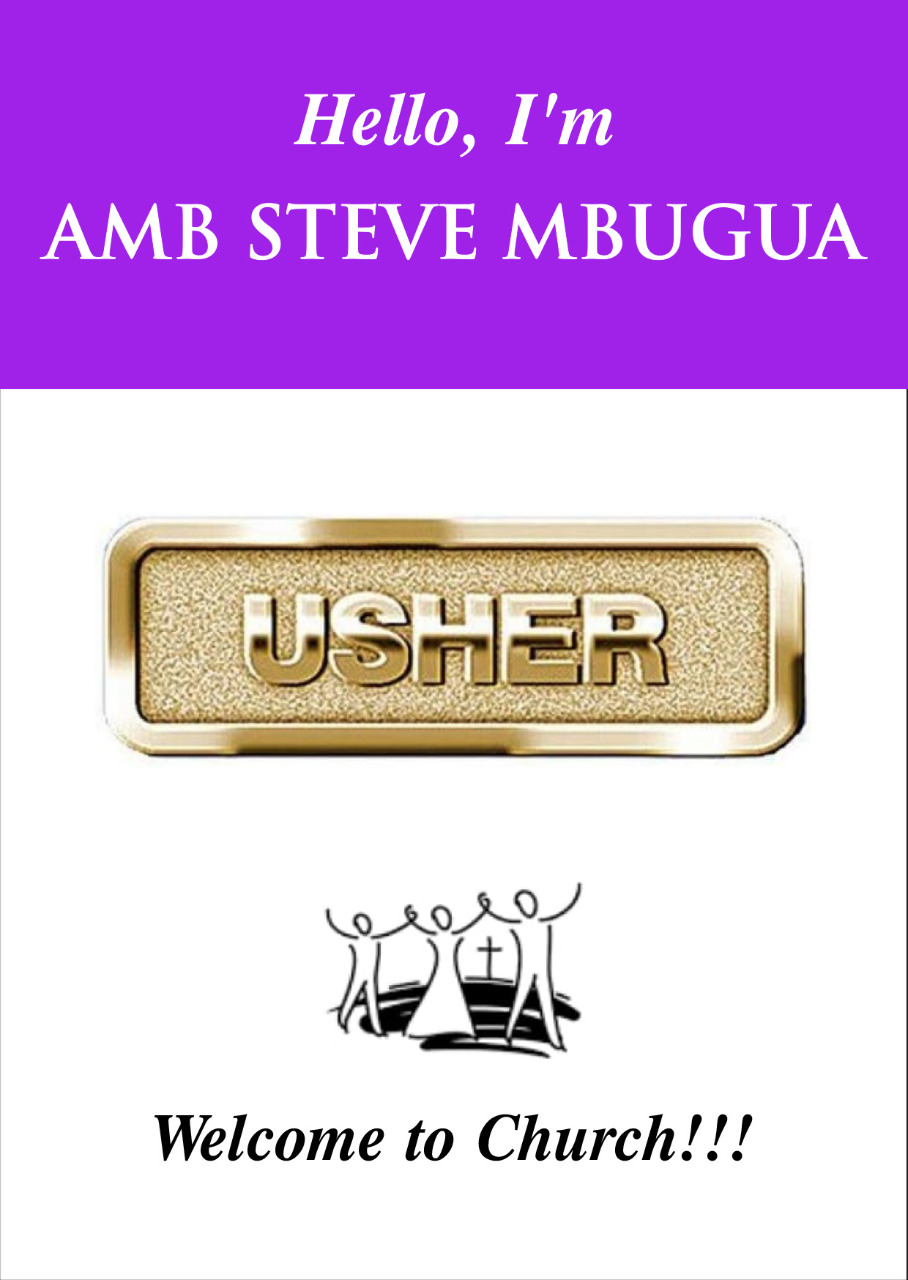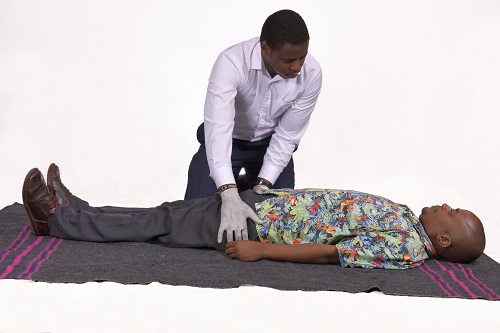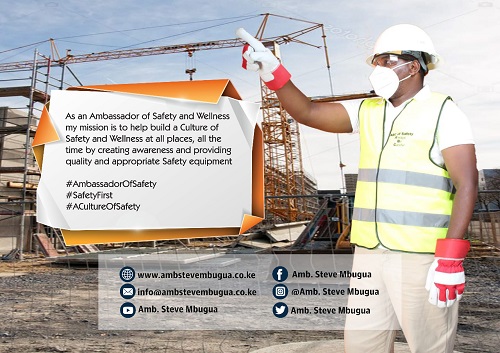Core to Ambassador Steve Mbugua’s Global Safety Advocacy
Ambassador Steve Mbugua, the world’s most renowned Ambassador of Safety, has dedicated his life to promoting safety in workplaces, churches, and communities worldwide. His groundbreaking frameworks and strategies, including the 5E Framework in Safety, continue to inspire organizations to adopt a culture that prioritizes safety, minimizes risks, and enhances operational effectiveness.
The 5E Framework in Safety—Engineering, Education, Enforcement, Environment, and Evaluation—is one of the most comprehensive and actionable safety approaches ever developed. It provides organizations with a systematic, proactive method to identify, analyze, and mitigate hazards while empowering employees to foster a safer working environment. With his extensive expertise in safety training, conferences, and authorship, Ambassador Steve Mbugua incorporates this framework into his teachings, transforming how safety is viewed and implemented globally.
This framework is particularly relevant to high-risk industries such as construction, manufacturing, healthcare, and event management, as well as for personal safety and community safety initiatives. Below is an expounded explanation of the 5E Framework and its application, along with examples from Ambassador Steve Mbugua’s work.
The 5E Framework in Detail
1. Engineering
Engineering involves designing and integrating safety features into tools, equipment, and processes to eliminate or minimize risks at their source. It addresses safety from a technical perspective, ensuring hazards are mitigated before they affect workers.
Key Aspects:
Safe Equipment Design: Machinery and tools are built with features like automatic shutoff, guards, and ergonomic designs to prevent injuries.
Example: Construction cranes fitted with overload indicators to avoid structural collapses.
Automation: High-risk manual tasks are replaced with automated systems, reducing human exposure to hazards.
Example: Robotics used in chemical plants to handle toxic substances.
Structural Integrity: Buildings, scaffolding, and workstations are designed to withstand environmental and operational stresses.
Example: Earthquake-resistant designs in construction zones.
Ambassador Mbugua emphasizes Engineering as a first-line defense in his safety training, particularly for industrial workplaces where proper machine design can prevent catastrophic failures.
2. Education
Education equips individuals with the knowledge and skills to identify hazards, follow safety protocols, and respond to emergencies effectively. It is a foundational element in building a proactive safety culture.
Key Aspects:
Employee Training Programs: Sessions to teach safety best practices, proper equipment use, and hazard identification.
Example: Teaching factory workers how to use fire extinguishers during fire safety drills.
Leadership Training: Educating managers and supervisors on enforcing safety standards and leading by example.
Example: Leadership workshops on addressing near-misses without penalizing employees for reporting.
Community Safety Awareness: Educating the public on safety issues such as road safety, disaster preparedness, and fire safety.
Example: Ambassador Mbugua’s First Aid Day events, where thousands are trained in life-saving techniques.
Through his platforms like Makinika Afrika International, Ambassador Mbugua ensures safety education reaches diverse audiences, from industrial workers to church ushers.
3. Enforcement
Enforcement ensures compliance with established safety policies, regulations, and standards. It instills discipline and accountability while promoting adherence to safety practices.
Key Aspects:
Policy Development: Establishing clear, actionable safety rules and procedures.
Example: Requiring workers to wear PPE like helmets and gloves on construction sites.
Regular Inspections: Supervisors conduct routine checks to ensure safety protocols are followed.
Example: Weekly inspections of scaffolding and ladders in high-rise construction.
Corrective Measures: Addressing violations with appropriate disciplinary or corrective actions.
Example: Issuing citations for unsafe work practices, such as bypassing machine guards.
Reward Systems: Recognizing and rewarding employees for outstanding safety performance.
Example: Ambassador Mbugua’s “Zero Incident” award programs for teams achieving safety milestones.
Enforcement is a critical component of Ambassador Mbugua’s advocacy. He stresses the importance of accountability through audits, inspections, and reward systems to foster compliance.
4. Environment
Environment refers to maintaining a workplace that minimizes risks through thoughtful design, proper maintenance, and fostering a culture of safety.
Key Aspects:
Workplace Layout: Organizing workspaces to reduce hazards and promote efficiency.
Example: Segregating walkways from vehicle routes in warehouses to prevent collisions.
Health and Hygiene: Ensuring cleanliness, proper ventilation, and appropriate lighting.
Example: Installing air filtration systems in industries dealing with hazardous dust.
Safety Signage: Strategically placed signs to alert employees of potential risks.
Example: “Caution: Wet Floor” signs to prevent slips in high-traffic areas.
Safety Climate: Creating an organizational culture where safety is valued and prioritized.
Example: Open forums where employees can voice safety concerns without fear of reprisal.
Ambassador Mbugua’s teachings emphasize the Environment as a key factor in reducing workplace accidents and promoting employee well-being.
5. Evaluation
Evaluation is the continuous review and improvement of safety practices to ensure effectiveness and adapt to evolving risks.
Key Aspects:
Data Analysis: Monitoring incident reports and safety metrics to identify trends.
Example: Tracking the frequency of forklift accidents and implementing additional training if necessary.
Incident Investigations: Reviewing near-misses and accidents to prevent recurrence.
Example: Investigating a fall incident to identify whether it was due to faulty harnesses or improper use.
Employee Feedback: Gathering insights from workers to refine safety protocols.
Example: Conducting anonymous surveys to assess employee perceptions of safety practices.
Benchmarking: Comparing performance with industry standards to identify areas for improvement.
Example: Adopting advanced safety technologies used by leading companies in the sector.
Ambassador Mbugua incorporates Evaluation into his global safety programs, encouraging organizations to adopt a mindset of continuous improvement.
Why the 5E Framework Matters
The 5E Framework provides a robust foundation for achieving safety excellence across industries. When implemented effectively, it results in:
Fewer Accidents: Risks are minimized, leading to reduced workplace injuries.
Enhanced Productivity: A safe environment ensures uninterrupted operations.
Regulatory Compliance: Adherence to safety laws avoids legal and financial penalties.
Improved Morale: Employees feel valued, leading to higher engagement and job satisfaction.
Ambassador Steve Mbugua’s Call to Action
Ambassador Steve Mbugua invites organizations, governments, and individuals to adopt the 5E Framework in Safety as part of their commitment to creating safer workplaces and communities. Whether you are a construction firm, a manufacturing company, or a ministry seeking to improve safety practices, this framework offers actionable solutions tailored to your needs.
To learn more about implementing the 5E Framework, access Ambassador Mbugua’s training, books, and resources at:
Website: www.ambstevembugua.co.ke
Safety Shop: www.nairobisafetyshop.org
Email: info@ambstevembugua.co.ke
WhatsApp: +254724036078
Together, let us build a safer, healthier, and more efficient future!
#ambassadorofsafety
#safetyambassador
#safetyculture
READ MORE
Building A Culture Of Safety Video




